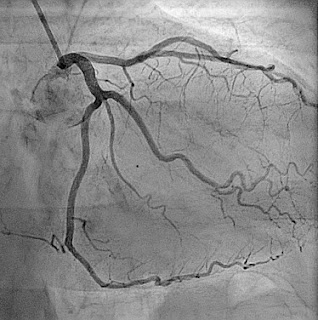A coronary angiogram (also known as a cardiac catheterisation) is a procedure that uses X-ray imaging to see coronary arteries (the blood vessels that supply your heart). The test is generally done to see if there's a restriction in blood flow going to the heart.
The test is done in a cardiac catheter laboratory or ‘cath lab’. The test last around half an hour, although it can sometimes take longer. Patient will need to lie flat for the procedure.
The dye lets doctor see how well the blood is flowing and shows up any narrowings.
Depending on the results, the doctor decide the treatment might need.
An angiogram can sometimes also be helpful for investigating other conditions, such as congenital heart disease.
- Patient will be asked not to eat or drink anything for a few hours before your procedure.
- Patient will be given a local anaesthetic injection in the wrist or groin. The catheter (a thin, flexible tube) will then be passed into an artery.
- The catheter will be directed through thr blood vessels and up to the heart. The doctors will use X-ray to help guide them to the arteries.
- A special dye called contrast will then be passed through the catheter and a series of images will be taken. It is very common to feel a hot, flushing sensation as the dye enters your bloodstream, but this is completely normal and only lasts for a few seconds. The dye will show up any narrowed areas or blockages in the artery on the X-ray.
- During the procedure, Patient will be attached to a heart monitor that records heart rate and rhythm and you’ll have a probe measuring oxygen levels on the finger.



No comments:
Post a Comment